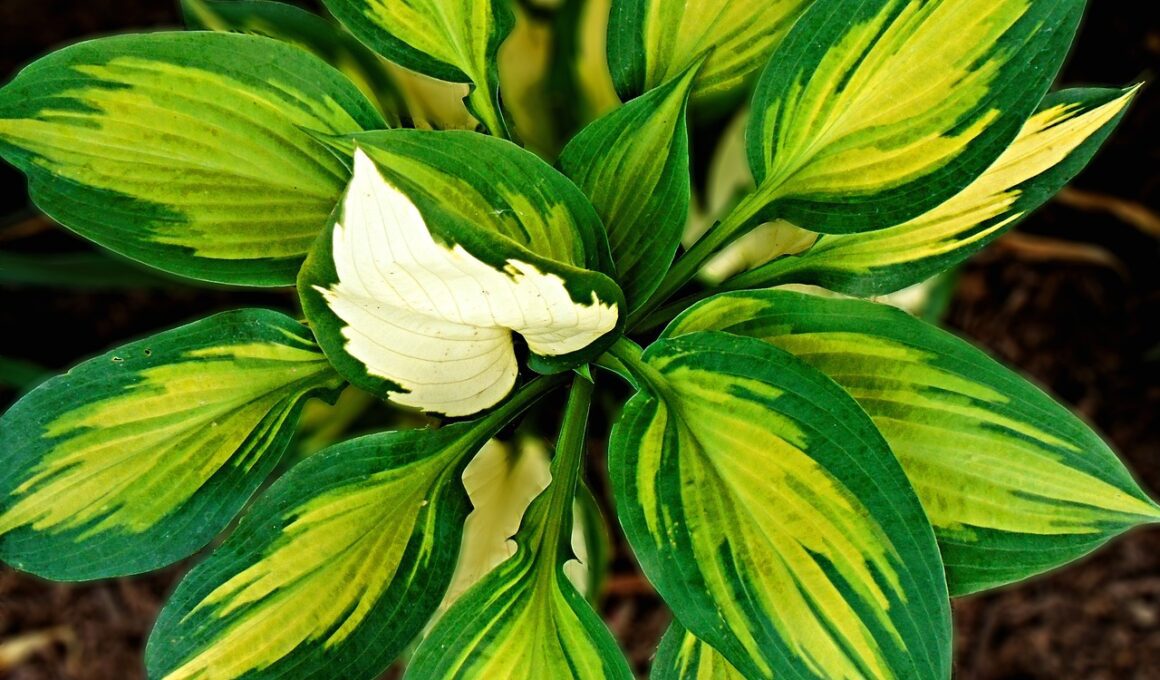Congratulations on successfully growing hostas! These perennials are known for their stunning foliage and beautiful flowers. However, once the flowers start to fade, you may be wondering what to do next.
Don’t worry, we’ve got you covered with some simple steps to care for your hostas after they finish flowering.
Firstly, it’s important to understand that hostas are hardy plants that can survive in a range of environments. They prefer partial to full shade and moist, well-draining soil.
Once the flowers start to wilt and die, it’s time to remove the flower stalks. This is an important step as it promotes the growth of new leaves and prevents the plant from wasting energy on producing seeds.
Removing the stalks is easy, simply cut them off at the base using a pair of garden scissors or pruning shears.
Understanding Hosta Perennials
Discover the secrets of these beloved perennials and learn how to keep them thriving year after year. Hostas are one of the most popular and versatile plants for gardeners. They come in a variety of shapes, sizes, and colors, making them perfect for any garden.
When it comes to planting hostas, it’s important to choose the right variety for your climate and soil. Make sure to research and choose the variety that’s best suited for your garden.
There are a few tips to keep in mind when planting hostas. First, make sure to choose a spot that gets partial shade. Hostas prefer a cool, moist environment and won’t do well in direct sunlight. Second, make sure to plant your hostas in well-draining soil. They don’t like to be in waterlogged soil, which can cause root rot. Finally, make sure to water your hostas regularly, especially during dry spells. Hostas prefer moist soil, so keep their soil moist but not waterlogged.
In conclusion, understanding hosta perennials is key to keeping them thriving year after year. By choosing the right variety for your garden and following planting tips, you can ensure your hostas will continue to bloom and grow for years to come. So, get out there and start planting your hostas today!
Removing Flower Stalks
Once hosta flowers start to fade, you should promptly remove the stalks to encourage the plant to focus on growing its foliage. Pruning techniques are important to follow to ensure that your hostas continue to grow healthy and vibrant. Here are some steps to follow to properly remove the flower stalks:
- Locate the stalks that have finished flowering and find where they intersect with the main stem of the plant.
- Using a clean pair of pruning shears, cut the stalk as close to the main stem as possible without damaging any of the leaves.
- Dispose of the cut stalks in a compost pile or use them as mulch for other plants.
- Repeat this process for each stalk that has finished flowering.
By removing the spent flower stalks, you are redirecting the plant’s energy back into developing its foliage. This will help the plant to grow stronger and healthier for the rest of the season.
Additionally, composting options are available for the removed flower stalks. Composting is a great way to turn organic matter into a nutrient-rich soil amendment for your garden.
Overall, removing the flower stalks of your hostas is a simple and important step in maintaining the health and vitality of your plants. By following these pruning techniques and composting options, you can help your hostas thrive and contribute to a healthier garden ecosystem.
Is it Necessary to Remove Hosta Flowers After They Bloom?
After blooming, should hostas be flowerless? Removing spent hosta flowers is a matter of personal preference. While it doesn’t harm the plant if you choose to leave the faded flowers, removing them can enhance the appearance of your hostas. Additionally, removing the flowers can redirect the plant’s energy towards growth and foliage, resulting in a lusher appearance.
Caring for Hostas Post-Flowering
After the vibrant display of hosta flowers, it’s important to continue caring for these beloved plants to ensure their continued health and beauty. One of the essential post-flowering tasks is pruning. Remove the flower stalks by cutting them off at the base of the plant. Pruning not only improves the plant’s appearance but also promotes healthy growth and prevents diseases.
Apart from pruning techniques, soil nutrition plays a vital role in taking care of hostas post-flowering. These plants require well-drained soil with a pH level between 6.0 and 7.5. If the soil is too acidic or alkaline, the plant’s growth and health will suffer. Add organic matter like compost, peat moss, or aged manure to improve soil quality and nutrition.
Fertilize with a balanced fertilizer, three times a year, to ensure your hostas have all the nutrients they need to thrive.
Incorporating these post-flowering care tips into your gardening routine will help your hostas stay healthy and beautiful. Pruning and soil nutrition are simple tasks that can make a big difference in the plant’s growth and overall appearance. By providing your hostas with proper care, you can enjoy their lush foliage and vibrant blooms for years to come.
Enjoying Hosta Foliage
Now that the vibrant blooms are gone, it’s time to sit back and enjoy the lush foliage of your beloved hostas. These plants provide a beautiful backdrop for any garden, and their leaves come in a variety of colors and textures.
To make the most of your hostas post-flowering, try these tips:
-
Creating shade: One of the key benefits of hostas is that they thrive in shaded areas. If you don’t have much shade in your garden, consider planting your hostas underneath a tree canopy or near other plants that can offer some protection from the sun. This will help your hostas stay healthy and vibrant throughout the season.
-
Combining with other plants: Hostas are incredibly versatile and can be combined with a variety of other plants to create a beautiful garden. Consider pairing your hostas with ferns, bleeding hearts, or other shade-loving perennials. You can also mix and match different varieties of hostas to create a stunning display of colors and textures.
-
Regular watering: Hostas need regular watering to stay healthy, especially during the hot summer months. Make sure to water them deeply once a week, and keep the soil moist but not waterlogged. If you notice your hostas drying out or wilting, give them a good soaking and they should bounce back quickly.
-
Pruning: While hostas don’t require much pruning, you can remove any yellow or damaged leaves to keep your plants looking healthy and tidy. You can also trim back any unwanted shoots or flowers to keep your hostas looking their best.
By following these tips, you can enjoy the beauty of your hostas long after their flowers have faded. With their lush foliage and easy-to-care-for nature, these plants are a great addition to any garden.
So sit back, relax, and enjoy the natural beauty of your hostas!
Can I Use Hosta Flowers for Resin Drying?
Yes, you can use Hosta flowers for resin drying. Hosta flowers can be dried and preserved for resin art, creating beautiful and unique pieces. The process of drying flowers for resin involves carefully drying the flowers to maintain their shape and color, making them perfect for resin casting.
Preparing for Next Growing Season
Get ready for next season’s gardening by preparing your hostas for a healthy and vibrant growth. After your hostas finish flowering, cut the flower stalks down to the base to encourage new foliage growth. It’s also the perfect time to start thinking about seed collection and soil preparation for next year.
To collect hosta seeds, wait until the seed pods have turned brown and begin to split open. Gently remove the seeds and allow them to dry before storing them in a cool, dry place. When it comes to soil preparation, hostas prefer well-draining soil with a slightly acidic pH level. Consider adding compost or peat moss to the soil to improve drainage and acidity levels.
By taking these steps to prepare your hostas for next season, you’ll be setting yourself up for a successful and thriving garden. Remember to keep an eye on your hostas throughout the winter and early spring, ensuring they receive adequate water and protection from harsh weather conditions. With a little bit of effort and care, you’ll be rewarded with beautiful and healthy hostas year after year.
Frequently Asked Questions
Can hostas be propagated after they finish flowering?
Looking to propagate your hostas after they finish flowering? Hosta propagation is a great way to expand your garden while also saving money.
To begin, it’s best to remove any flowers that have finished blooming. This will redirect the plant’s energy towards producing new foliage instead of seeds. Once the flowers are removed, you can begin the process of propagating your hosta.
Best practices include dividing the plant’s root system and planting the new divisions in well-draining soil. Make sure to keep the new divisions well-watered and in a shaded area until they have established roots.
With these tips and tricks, you’ll have a thriving hosta garden in no time!
How often should hostas be fertilized after they finish flowering?
After your hostas finish flowering, it’s important to provide them with the right nutrients to support their growth. Post flowering fertilization can help keep your hostas healthy and thriving.
Dos include using a balanced fertilizer that contains nitrogen, phosphorus, and potassium, and applying it according to the instructions on the label.
Don’ts include using too much fertilizer or applying it too frequently, which can burn the leaves and damage the plant.
Top nutrient sources for hostas after flowering include compost, aged manure, and slow-release fertilizers.
By following these guidelines, you can ensure that your hostas get the nutrients they need to continue flourishing.
What are some common pests and diseases that hostas may face post-flowering?
After your hostas finish flowering, it’s important to keep an eye out for common pests and diseases that can harm your plants.
One common pest that can wreak havoc on hostas are slugs. To control them, try using a slug bait or placing copper tape around the base of your plants.
Another potential issue is foliar nematodes, which can cause yellowing and browning of the leaves. To prevent these nematodes, make sure to clean up any fallen leaves and debris around your hostas, as they can harbor the pests.
With a little bit of attention and care, you can help ensure that your hostas stay healthy and vibrant throughout the season.
Is it recommended to divide hostas after they finish flowering?
Dividing hostas after they finish flowering is highly recommended as it has numerous benefits. It not only helps to control the size of the plant, but it also promotes the growth of new shoots and improves the overall health of the plant.
The best time to divide hostas is in the early spring or fall when the weather is cool and the plant is dormant. This will minimize the stress on the plant and give it enough time to establish new roots before the next growing season.
By dividing your hostas, you also get the opportunity to propagate them and create new plants for your garden or share with friends. So, don’t hesitate to divide your hostas and enjoy the benefits of a healthier and more beautiful garden.
Can hostas be grown in containers and if so, what special care do they require after flowering?
Growing hostas in containers is a great option for those with limited garden space or for those who want to move plants around. When selecting a container, it’s important to choose one that’s large enough to accommodate the hosta’s root system and that has drainage holes.
When it comes to watering, it’s best to keep the soil consistently moist but not waterlogged. Optimal lighting conditions for container-grown hostas include partial shade to full shade, depending on the variety.
After flowering, pruning should be done to remove any dead or damaged leaves. With proper care, hostas can thrive in containers for many years.
Conclusion
So, you’ve watched your hostas bloom and now they’ve finished flowering. What’s next?
The good news is that hostas are relatively low maintenance plants, so caring for them post-flowering is relatively easy.
First, it’s important to remove the flower stalks to encourage new growth and prevent the plant from expending energy on seed production.
Next, make sure to continue watering and fertilizing your hostas as needed.
Enjoy the foliage throughout the rest of the growing season and don’t forget to prepare for next year by dividing and transplanting your hostas as needed.
With these simple steps, your hostas will continue to thrive year after year.








